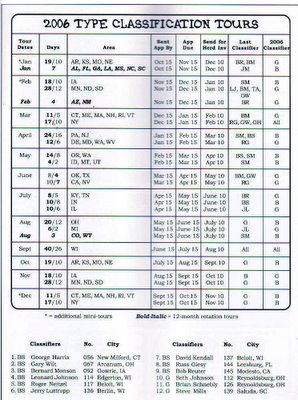Cattle feeding tips for winter
Rusty Evans - The Leaf Chronicle
'Each year during cold weather cattle producers are faced with the same question: This year will it pay to adjust feed levels for my cows during cold weather?
In 2006, the answer is yes.
Jim Neel, a professor of animal science and beef cattle specialist with University of Tennessee Extension says, "The amount of additional feed to account for the cold weather events should be equivalent to about 125 pounds of corn per cow, or about 2 bushels of corn per cow. The advantages of such ration adjustments would be economically favorable with current grain and feed prices less than $2 per bushel."
Neel says previous studies have shown that pregnant beef cows exposed to cold weather require more energy for maintenance. "For example, at Kansas State University, pregnant cows have been shown to gain as many as 115 pounds over a 4 1/2-month period if their ration was adjusted for cold weather as opposed to cows who put on just an additional 26 pounds when their rations were not adjusted for the weather," he said.
Neel also said cows who are fed rations adjusted for cold weather add approximately 10 pounds from fall to the following fall, following calf weaning, while those whose rations are not adjusted can lose 90 pounds or more.
"Cows fed adjusted winter rations also tend to cycle faster," Neel said.
As winter feeding gets underway, producers should remember that during cold weather cattle need more feed to perform their best.
Cattle are comfortable in an environment of around freezing (32 degrees Fahrenheit) up to around the mid-70s, Neel said. "As the temperature drops below freezing and snow or other moisture occurs, cattle will need extra energy to keep warm and functioning."
"The rule of thumb as the temperature drops is to increase feed 1 percent for each degree drop in temperature below 32 degrees Fahrenheit. For example, if the temperature is 20 degrees, increase the feed fed by 12 percent," he said.
Neel warns producers to pay attention to wind chills. "If the wind chill drives the temperature down to 15 degrees, the feed will need to be increased by 17 percent," he said. "Moisture will also reduce the wind chill."
The expert says it is better to provide the extra feed in the form of good-quality, long-stem hay. "During the digestion of hay, heat is generated which contributes to maintaining body warmth," Neel said.
"Supplementation with grain or other concentrates is okay, but good-quality hay aids in generating heat."
More information is available at your local county Extension office.'










